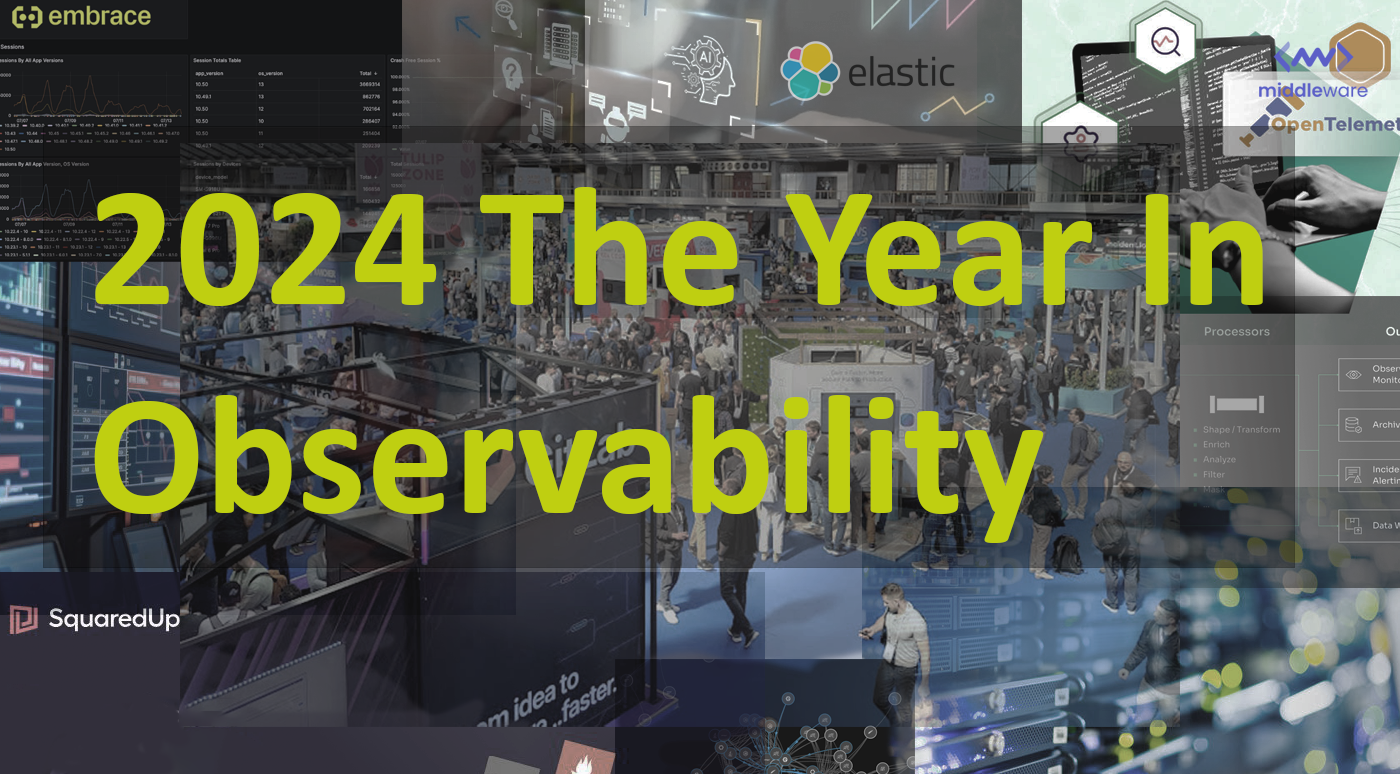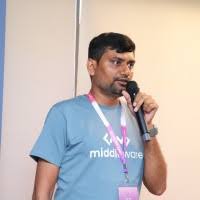
2024 Has been a spectacular year for observability. The market continues to expand and the domain of observability itself has firmly established itself in the mainstream of IT. It is also a dynamic and exciting place to be. The rise of eBPF, the rapid pace of OpenTelemetry adoption and the AI revolution are having a transformative effect on the industry.
For our review of 2024 we have invited four leading figures in the field to share their thoughts on the year in observability and, if they are feeling brave, make some predictions for the year ahead. The contributors themselves represent the remarkable breadth and diversity in the observability space at the moment. Andrew Tunall is President of Embrace - who are re-defining Mobile observability, whilst Sawaram Suthar is Founding Director of Middleware, one of the modern full stack vendors we referenced in our recent article on the changing face of observability. Diana Todea is a regular speaker at conferences and has recently been involved with Developing the new OpenTelemetry certification. Carly Richmond is well known for her advocacy role at Elastic - who are blazing a trail with the development of their AI platform.

Diana Todea is a Senior SRE at EQS. She is a regular speaker at observability conferences and is a contributor to the OpenTelemetry project.
Reflecting on the year 2024's trends and events, we cannot ignore AI's mark on observability. Many of the demos I have seen focused on how AI Assistants can improve incident management and DevOps/SRE workflows and we also witnessed the release of a lot of new vector databases.
Out of the 14 tech conferences I have participated in this year, one stood out for me: the OSMC conference in Nuremberg, Germany. I never thought I would see so many good OSS alternatives to the commercial observability platforms. One particular demo from Netdata opened my eyes: seeing an entire o11y platform embed with ML workflows and taking the developer experience to a whole new level. It made me think I definitely want to test it more but also made me wonder: Will these "magical" ML/observability platforms make our SRE/DevOps engineer jobs irrelevant? Maybe the saying "AI will not steal your job, someone who knows AI will" still holds water. My advice to you for 2025 is: stay open, stay sharp and always keep learning!

Andrew Tunall is President and CPO of Embrace and was previously VP of Product at New Relic
As digital interactions become increasingly complex, users demand seamless performance and intuitive interfaces. I’ve been hearing about digital transformation for 10 years, but transformations to how frontend teams build and operate web and mobile apps have been lagging behind. 2025 seems poised to be the year where the consumer shift that has been happening during that period is finally reflected in how the market changes its observability focus and practices.
With support for distributed traces, metrics, and logs, OpenTelemetry unifies data collection, empowering teams to pinpoint performance bottlenecks or sluggish response times. But those core telemetry types only recently have started to be correlated in a way that tells the story about what user experiences look like.
What sets the future apart is the shift toward actionable insights. Observability will no longer be about amassing data; it will focus on translating telemetry into answers, whether through better correlations or AI summarization. And increasingly, those answers will be about user impact.
I’m excited to see the shift as more frontend engineering teams get engaged in the OpenTelemetry project, and observability in general, and what that means for better user experiences in the web and mobile apps we use in our everyday lives!

Carly Richmond is a Principal Developer Advocate at Elastic and her interests include OpenTelemetry and eBPF with a Sprinkling of AI
2024 for me has been an interesting year in Observability. OpenTelemetry and eBPF have both had an increased buzz about them. In conversations, I’m finding that logging and basic metrics are commonly used, but there is a divide in the adoption of tracing that separates intermediate and advanced practitioners. Conversely, some tools such as Synthetic Monitoring, specifically monitoring-as-code practices and OTel client instrumentation, are quietly simmering. You can’t always predict a tool's popularity.
Cost is still a key consideration, impacting data retention and cost. I speak to many engineers switching to free tooling or consolidating their tools. What’s important is to ensure migration efforts, productivity, training and visibility across your application ecosystem are maintained.
It would be rude not to mention AI adoption on many platforms. 2024 has been the year when many vendor platforms added assistants and other AI capabilities to help explain, diagnose, and potentially remediate issues. These tools have great power, but we need to validate the sources of information. For this reason, I don’t believe AI will replace junior DevOps Engineers, SREs, or Platform Engineers anytime soon.
I’m not brave enough to predict what will emerge in 2025. But I’m excited to continue the journey!

Sam Suthar is Founding Director at Middleware, a unified observability platform
In his contribution, Sam addresses two key trends shaping current observability practice and strategies.
Excessive data collection has led to inflated costs without real value. Customizable observability platforms now enable companies to flag and filter unnecessary data, reducing expenses without sacrificing insights. By implementing comprehensive data processing with compression and indexing, companies can significantly reduce data size, leading to cost savings. This approach is expected to save companies 60-80% on observability costs, shifting from exhaustive data collection to efficient, targeted monitoring.
AI is transforming observability by automating root cause analysis, anomaly detection, and predictive alerts. AI-powered platforms identify patterns, highlight potential issues, and suggest fixes, thereby enhancing efficiency and reducing mean time to resolution (MTTR). AI-driven anomaly detection capabilities enable the identification of unknown unknowns, detecting unusual patterns of behavior not seen before, and allowing for timely investigation and remediation. Furthermore, predictive alerting can even pinpoint specific telemetry data (logs, metrics, traces, or events) that may indicate issues, enabling proactive remediation. This level of automation and foresight is redefining the future of observability and reliability.
I would like to say a huge thanks to Diana, Sam, Andrew and Carly for taking time out of their schedules to share their thoughts and reflections. The Year In Observability Review is only the first instalment in our end of year coverage. On December 31st we will be rounding off the year in style with the unveiling of the 2024 O11ys - the Oscars for the observability industry. We ran the awards for the first time last year and they sparked enormous interest within the community. We can't wait to reveal the 2024 winners!'
